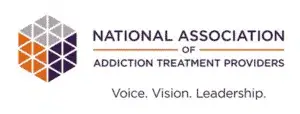
When I first ventured into sobriety and recovery, I couldn’t help but think about everything that I had heard about addicts in the past. When it came to addiction, I had been told everything from, “addicts can stop any time they want to,” or “he/she must come from a bad home life since he/she is an addict,” and even, “his/her use really isn’t that big of a problem. He/she isn’t as bad as ______.”
What I didn’t realize at the time was that many of these claims were not true. While it may not seem obvious, these generalizations about addicts and alcoholics are myths, and hearing them can be dangerous for those in active use who are looking to get help with their addictions.
In fact, when it comes to getting clean and sober, some addicts and alcoholics (such as myself) may be scared to seek help because of misinformation like this that they’ve been fed in the past.
Let’s take a look at some of the most common myths about addiction and what the reality is for all of them:
This Season, Give Yourself the Gift of a Fresh Start.
Whether you are struggling with addiction, mental health or both, our expert team is here to guide you every step of the way. Don’t wait— reach out today to take the first step toward taking control of your life.
The myth: Addicts and alcoholics need to hit rock bottom before reaching out for help.
The reality: Any person can ask for help at any point in their addiction. The idea that an addict must wait until they hit rock bottom is dangerous in a way because addicts are good at manipulating. They can easily convince themselves that their rock bottom wasn’t that low, and they could always hit a lower bottom. This perpetuates a cycle of continuing to use and hitting new rock bottoms instead of reaching out for help at the first sign of trouble. Having a high bottom doesn’t make someone less of an addict. It just makes them smarter for reaching out early on.
The myth: Addicts cannot stop using simply because they lack willpower.
The reality: Willpower has little, if anything, to do with addiction. In fact, addiction and addictive behaviors take root in the brain. Drugabuse.gov states that “drug addiction is a complex disease, and quitting takes more than good intentions or a strong will. In fact, because drugs change the brain in ways that foster compulsive drug abuse, quitting is difficult, even for those who are ready to do so.” Addicts can try to summon the willpower to stop using, but often sheer willpower alone is not enough. This doesn’t make them weak or incapable. It just means another approach to sobriety is needed, such as treatment, because the disease affects the brain so deeply.
The myth: Addicts must come from an unstable home life.
The reality: I know many people in recovery, myself included, who come from a fantastic home life. I had a stable home life and a mother and father who rarely drank. I was happy and successful growing up. Nothing in my life should have lead me to become an alcoholic, yet I did. While it’s true that environmental factors can have an impact on an individual’s drug and alcohol use, those factors are not a necessity when it comes to being an addict or alcoholic.
The myth: It’s easy to identify addicts and alcoholics.
The reality: This myth couldn’t be further from the truth. When I first got sober, I had it in my mind that I couldn’t be an alcoholic because I still had a job, I was still in school, I still had friends…the list goes on. I had always envisioned an addict or alcoholic as someone who was completely alone, who had no job and no money.
The truth is that there is no way to identify an addict or alcoholic. Sure, some of them do fit the stereotypical image conjured up by the media, but many of them do not. High-functioning addicts and alcoholics still hold jobs, still have families, and still appear successful. Yet they struggle with a disease that is out of their control. The bottom line is that there is no sure fire way to identify an addict or alcoholic.
The myth: It’s only dangerous to be addicted to illegal drugs.
The reality: Yes, hard and illegal drugs such as cocaine, heroin, and meth are very dangerous. However, many people die each year from prescription drug overdoses and alcohol overdoses – both of which are legal. In fact, according to the National Institute on Alcohol Abuse and Alcoholism, more than 88,000 people die alcohol-related deaths each year compared to 2014’s 11,000 deaths from heroin overdoses. Legal drugs and substances are easier to obtain than illegal ones, often making them the drug of choice for many. Just because a substance is technically legal does not mean it is not dangerous or addictive.
Don’t let these myths about addiction prevent you from seeking help. If you or a loved one is addicted, reach out to our team today. Recovery is possible.








